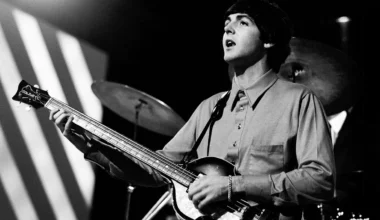Creating a hit single isn’t easy; it requires a blend of talent and luck to craft a song that truly resonates with the masses. When a track is powerful enough to drive fans to record shops for a physical copy, it becomes a major milestone. Many artists strive to replicate their successful formula, but The Cure chose to break that mold.
In the summer of 1983, The Cure achieved commercial success with “The Walk.” Although they had already released iconic tracks like “Boys Don’t Cry” and the eerie “A Forest,” “The Walk” catapulted them into the top 20 for the first time.
Typically, a taste of chart success would push most bands back to the studio to create another hit. Robert Smith, the band’s frontman, recalled the pressure surrounding “The Walk” during an interview with Rockerilla. “There was so much pressure around ‘The Walk’ because it went in the charts, and now everyone wants another single,” he explained.
Despite the pressure, Smith and his bandmates recognized they couldn’t give in. “We must resist this temptation,” he declared. He expressed his fatigue with being confined to a particular sound and audience. “People don’t understand why we split up; this would be the ideal moment to capitalize on three years of constant touring. Everyone said our next album would be definitive, but we chose to call it quits without meeting our initial goals.”
Ironically, even after vowing to resist the pressure for another chart-topping single, their subsequent release exceeded the success of “The Walk.” Just months later, The Cure returned with “The Lovecats.” This new track had a different vibe, trading the synth-driven sounds for a bouncy bassline and vibrant keys. While it departed from the New Order-inspired sound of “The Walk,” it achieved remarkable commercial success.
“The Walk” had marked their entry into the top 20, peaking at number 12 on the UK charts. In contrast, “The Lovecats” climbed to number seven, giving them their first top ten hit. They achieved this milestone by staying true to their artistic vision, not by attempting to recreate the magic of “The Walk.”
With its jazzy and quirky essence, “The Lovecats” captivated audiences, surpassing the popularity of its predecessor. This bold approach allowed The Cure to continue thriving, leading to the release of The Top the following year and further establishing their place in the music scene.
By resisting the urge to replicate “The Walk,” The Cure preserved their creative freedom and explored new musical territories, all while steadily climbing the charts.







